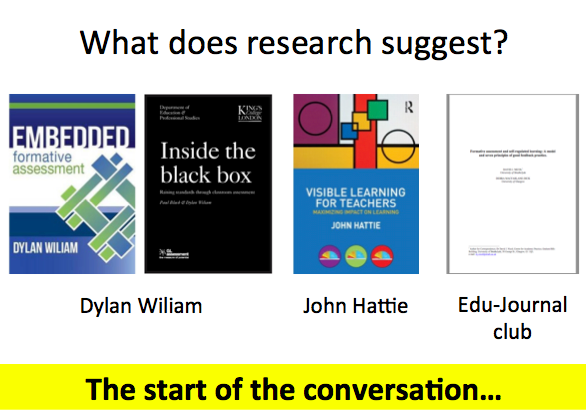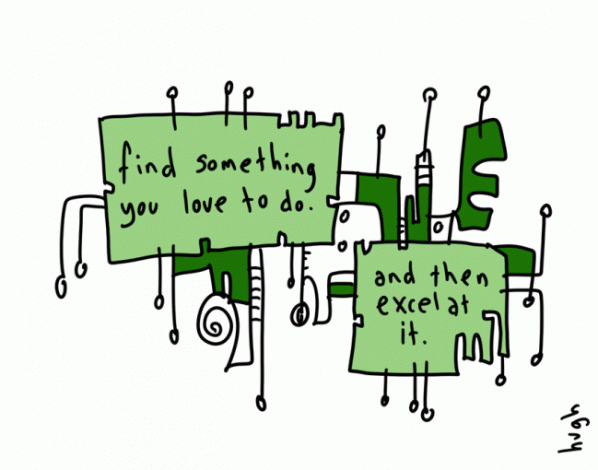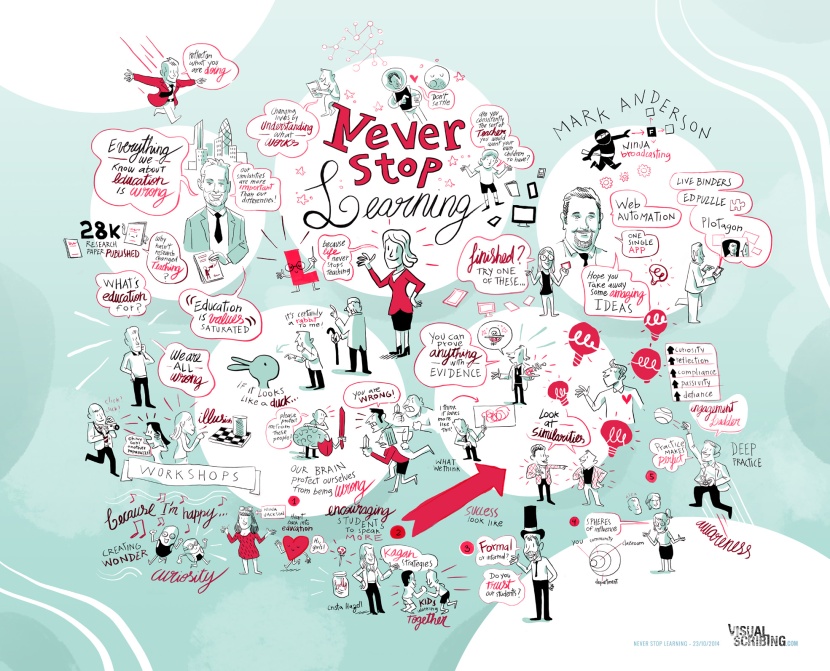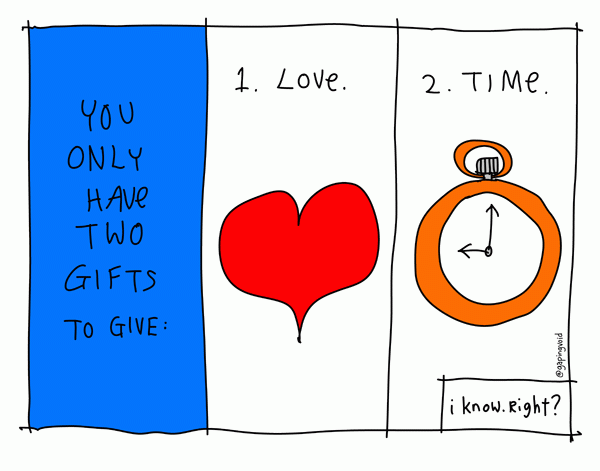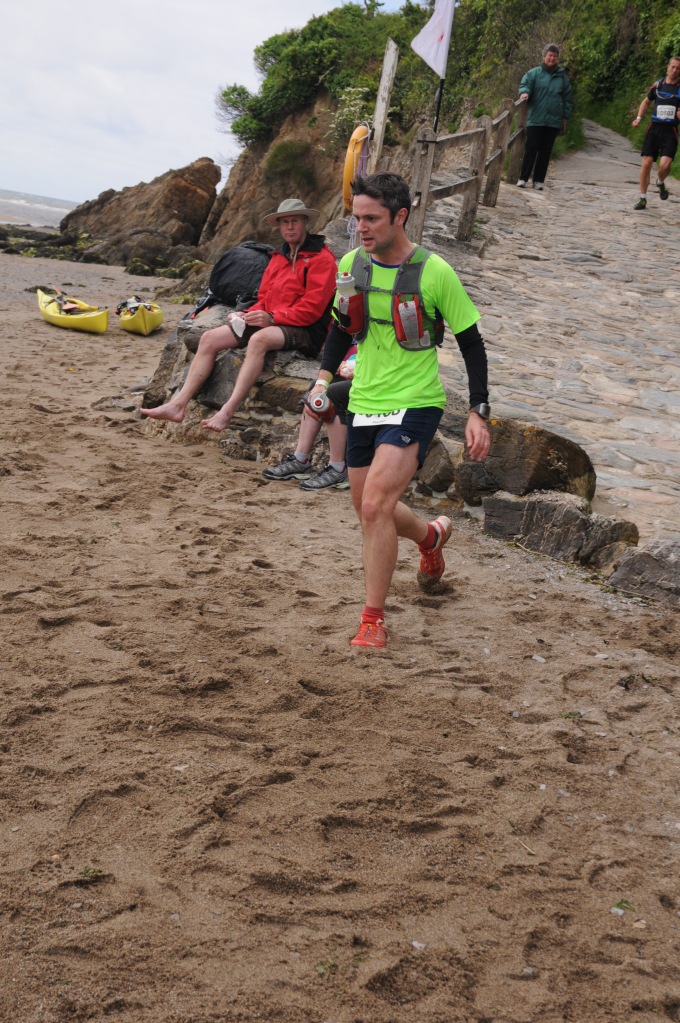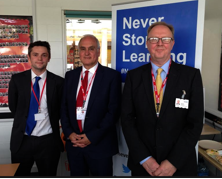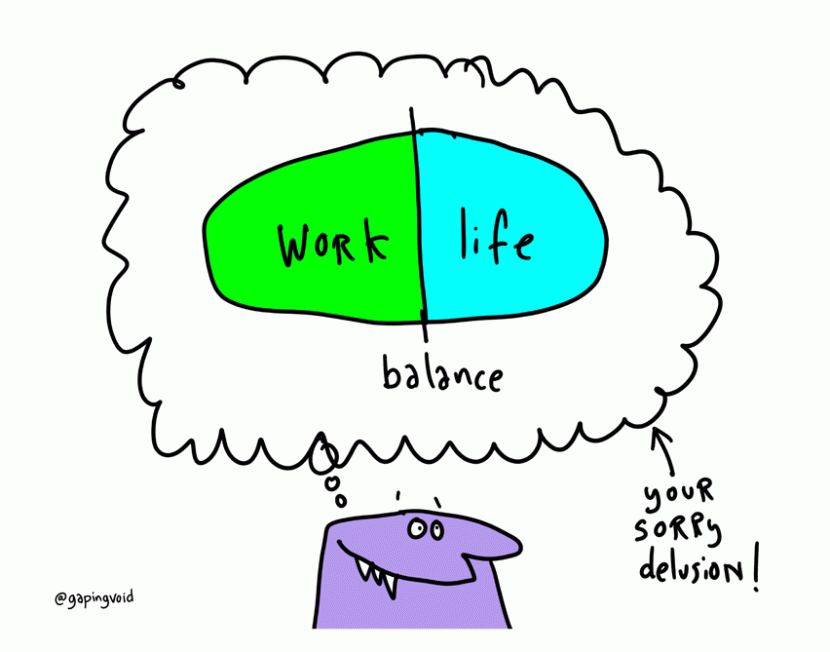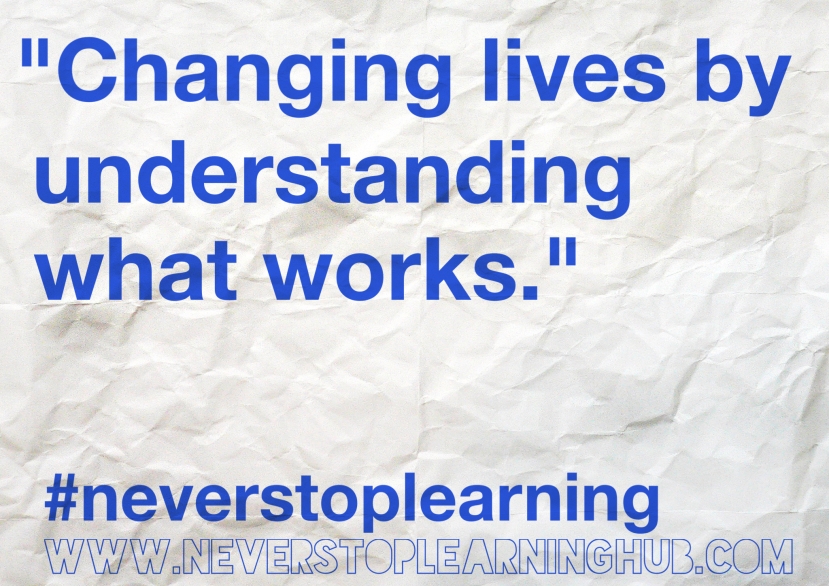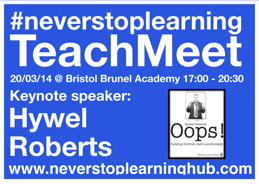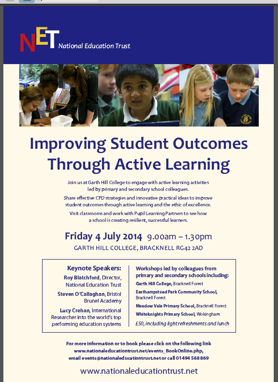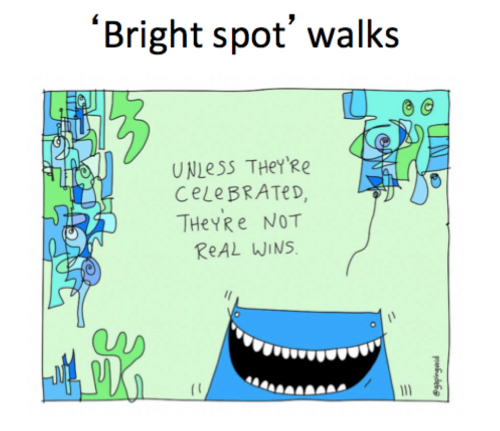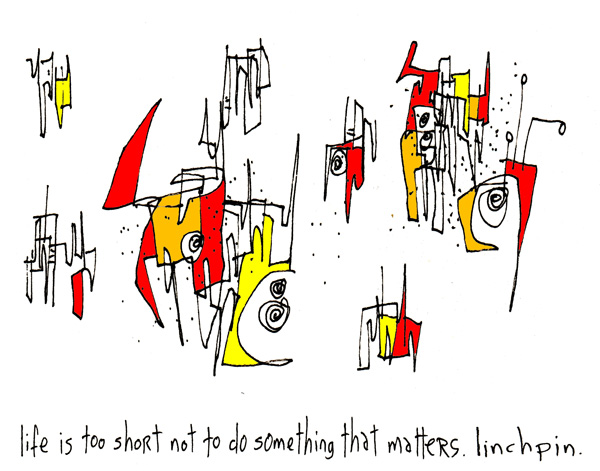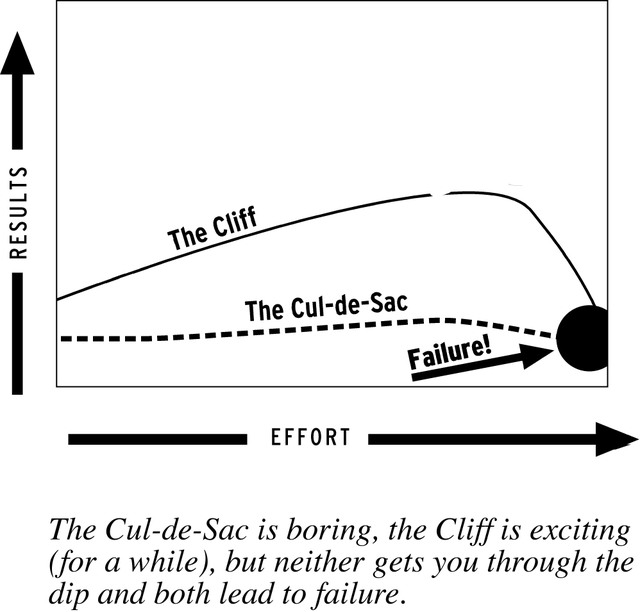Category: leadership
Gratitude.

Gratitude is one of the most powerful qualities human beings possess and also one of the most powerful opportunities to improve another persons well being. It’s a small gesture that goes an extremely long way in helping people understand that they have made a difference. In schools a huge range of people make a significant difference every day and it’s this collective purpose that makes a school a great place to not only work but dedicate yourself to meaningful work; the least young people deserve. But how often to we say thank you? Probably not enough.
Over the last three weeks I’ve spent lunch duty talking to students about gratitude and asking if they would like to show gratitude towards a member of staff within the school. This was an idea I borrowed from Micheala school having seen some of the thank you notes from students to teachers, posted online. To capture this I put together a simple gratitude slip which I asked students to fill out. Some of the responses from students have been truly remarkable – they continue to surprise me everyday in the most amazing ways. Here’s a few examples:
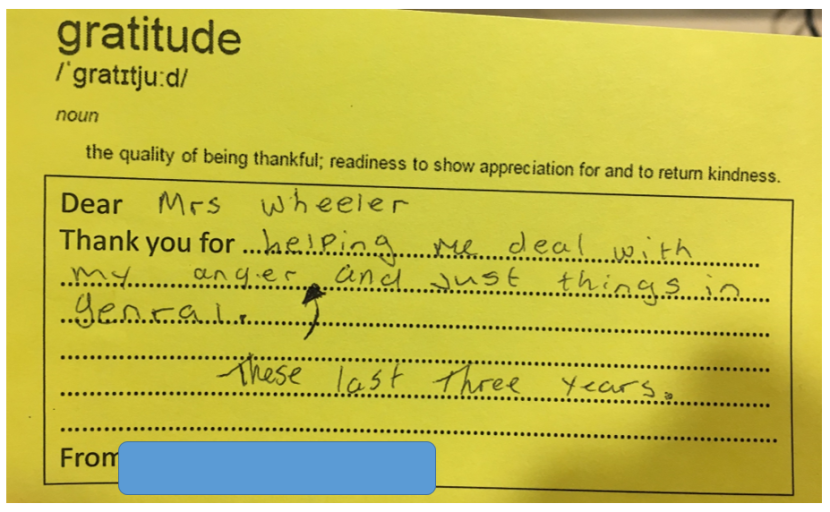


In a final staff get together before breaking up for the Christmas holidays I’ll be handing out over 200 gratitude slips to staff from grateful students. It’s been a fascinating experience talking to students about who they would like to thank and why. It’s made me reflect on the many people I need to thank as a senior leader in the school but also in my life – my parents, siblings, friends, colleagues (who inspire and challenge me daily) and the remarkable teachers I had when I was at school.
Gratitude should not end with a few notes at the end of a busy term. Gratitude is the very essence of a purposeful life that should be the foundation of every school ethos.
To all the people that have helped, guided, challenged and supported me over the years – THANK YOU!
Autonomy | Consistency – Good feedback causes thinking.
Good feedback causes thinking.
If feedback is one of the most important factors in improving student work and outcomes.
If the modelling of the feedback process enables young people to develop their own self-regulation of improving work.
How does a school implement a whole school feedback policy that takes into account the many nuances of each subject?
Feedback is important. We feedback to students daily in every lesson in a variety of different ways. Part of my role this year has been to draft a feedback policy for the school so that students consistently get effective feedback across the curriculum.
Before venturing any further it’s worth pausing for a moment to consider the difference between marking and feedback (something that is often taken for granted).
Marking is very much about checking a piece of work against a set criteria. If the criteria is clear and concise this is something students should do themselves before submitting a piece of work. Providing the criteria is clear then the act of marking should open up the gaps in learning. It’s the feedback that follows to the student that can communicate how well a student has met the criteria and initiative improvements to the work. The purpose of feedback? It has to be to close the learning gaps.
In thinking about and working towards effective feedback it’s worth considering what research on the matter suggests – remembering that the research is just start of the conversation.
Dylan Wiliam.
One of my favourite thinkers on the subject is Dylan Wiliam. From his work with Paul Black called ‘Inside the black box’ they suggested that in order for students to truly benefit from feedback students needed to know three key things:
I’ve tried to sum this up visually in the diagram below:
This is where modelling becomes a pivotal part of the feedback loop. In order for students to achieve the required ‘good performance’ it needs to be modelled to them. This could be through the use of work from previous students or live modelling of current work as students are undertaking the task. Simply providing students with a rubric is not always useful as they tend to be vague and abstract. Showing students an example of good performance and then de-constructing it with them to highlight the success criteria seems a far more valuable use of time.
Once students have a more secure understanding of what it is they are aiming for and have made an attempt, they next need to know how far away from the desired good performance they are and what they need to do in order to close this gap – the feedback.
Dylan Wiliam also suggests training students to carry out a number of steps before submitting work (which starts the wheels in motion for self-regulation):
I’ve tried this multiple times and have started to embed this into my practice, insisting students check their work against the criteria, check for spelling errors, e.t.c. before submitting the work. I have also in some cases handed work back to students to carry out these checks sending a clear message to students that they must take some responsibility in the feedback process.John Hattie.
John Hattie’s meta analysis into effective teaching and more precisely feedback is nicely summed up (in another of @LearningSpy’s slides) here:
The key idea to take away here is that feedback is really powerful but its impact has the potential to be both positive and negative. So how do we keep the impact positive? How do we train students and motivate them to actively seek feedback themselves and eventually self-regulate part or all of the process?
Effective feedback?
Taking into account some of the ideas from the research and then also spending time talking to teachers in my school who consistently get good outcomes, I drafted (with the help of @Teach_Physics) success criteria for effective feedback (a starting point at least) that could be used to shape a whole feedback policy.
These criteria can be applied to both verbal and written feedback. As we began to test the criteria by going through our feedback strategies we quickly found that it is difficult to argue that each is not important for closing the learning gap between current and great performance. One aspect of the criteria that we discussed at length was should a feedback strategy be created with observers in mind and be made explicitly visible to them. The answer is probably no. Feedback strategies should concern themselves with improving student awareness of great performance and closing the gap between current and great performance. Ofsted don’t dictate how feedback is given or the frequency of it, therefore as long as a feedback policy contains examples of the strategies being employed by teachers, the emphasis can be placed upon the observer to look at the policy beforehand so they know what to look for. This is an important step forward as it stops teachers creating redundant feedback strategies that have the sole purpose of pleasing an observer rather than closing the learning gap.
Drafting a whole school feedback policy.
In drafting a whole school feedback policy it’s important to take into account a few things:
- The principles of effective feedback (see success criteria) are probably the same across different curriculum areas.
- The feedback strategies employed by teachers across different curriculum areas are probably not the same.
For example if we take verbal feedback given during a PE lesson on a practical skill vs. written feedback given to a written piece of work in English, the principles of effective feedback are probably the same but the strategy to achieve this is different:
- It’s possible to challenge the student in both cases to think about and produce excellent work through verbal (probably easier with verbal feedback in a practical situation as the teacher can model it immediately) and written feedback.
- Feedback can be close to the learning – in the moment for the student in PE. The challenge for the English teacher is the turnaround of marking/feedback but there are strategies to help achieve this (code-marking for example).
- Ensuring no student opts out of the feedback (especially vulnerable groups like pupil premium) is challenging and there may be issues beyond the teachers control that impact on this, but that doesn’t mean to say we should not aspire to every student acting on feedback to improve their work and close the gap to great performance.
- Giving students time to act on feedback is paramount to effective feedback otherwise whats the point? In both situations in this example it’s possible to give students time and space to act on the feedback they receive. It may require some planning in terms of building time into a SoW, but this is a really important part of the process.
- Is it manageable for teachers? This is another challenge, but not an impossible one if the teachers (in this example) are prepared to experiment with different strategies (especially when dealing with written feedback).
This academic year we’ve moved our policy on feedback forward by setting the criteria for effective feedback (and we’re open for this to change as new ideas emerge) and then asking curriculum areas to use feedback strategies that hit the criteria and work for their subjects – Autonomy | Consistency.
Adapting a form I first read about in @HuntingEnglish’s post about whole school feedback, curriculum teams have been asked to create a policy using the template below:
This will be a working document that is quality assured and tested throughout the academic year through regular work evaluations and lesson observations. The policy also includes an appendix for each curriculum team which they will update with examples of the feedback policy in action so that observers have a clear idea of what they should before going into any classrooms. It makes supportive accountability easier as the curriculum teams have come up with their own strategies (that meet the criteria).
Here’s the first draft of the Science teams policy:
Feedback matters – lets embed it into our practice rather then bolt it on.
Further reading.
@LearningSpy archive on feedback – http://www.learningspy.co.uk/tag/feedback/
@HuntingEnglish – Whole school feedback – http://www.huntingenglish.com/2015/05/16/whole-school-feedback-policy/
@headguruteacher – Making feedback count – http://headguruteacher.com/2012/11/10/mak-feedback-count-close-the-gap/
@danbrinton – Fast feedback – https://belmontteach.wordpress.com/2013/12/06/fast-feedback-4/
@teachlikeachampion – Forget the rubric – use worked examples instead – http://teachlikeachampion.com/blog/dylan-wiliam-advises-forget-rubric-use-work-samples-instead/
#Nurture1415
2014 has been an extremely busy year both professionally and personally. I have taken on more responsibility and challenge at school as part of an extended leadership team, focusing on teaching and learning. Me and my wife are expecting our first child in April 2015, which means things are changing (in a good way!). It has been almost two years since I set up this blog and it has enabled me to reflect much more deeply on my own learning in teaching and leadership.
Here’s a few things (in no particular order) I have learnt / achieved in 2014.
1. Never underestimate the power of positive relationships in school. I learnt very quickly in my new leadership position the power of listening to concerns and more importantly acting upon them. The minute you don’t, trust is lost and it’s incredibly difficult to ever get it back. Some advice from Stephen Covey that I have been able to practice (a lot!) is “Seek first to understand before being understood.”
2. Prioritise the main thing. What one thing could you do more of that will have the biggest effect in school? This was a question posed by the Principal at one of our SLT meetings. Quite often the urgent takes the place of the important. there’s always an email that needs replying to or some marking to be done, but in my leadership whats the one thing that would make a bigger difference across the school? Getting into classrooms. The last 2 weeks of term I managed to walk classrooms every other day for about 45 minutes. This enabled me to talk to students about their learning, talk to staff, champion great practice and give live feedback with no grades. In discussion with other members of SLT I believe we have learnt more about the typicality of teaching then planned learning walks or observations.
3. TeachMeet #NeverStopLearning. In hindsight it was probably a bit ambitious trying to get teachers to attend an evening event the day before term 1 came to end, but that did not deter just over 100 teachers making the effort. The event was a great success with David Didau providing a very thought provoking keynote. There were some excellent workshops from Nina Jackson, Lucy Crehan, Crista Hazell, Zofia Higlet, Amber Bracey, Alex Heath, Chris Baker and Rory Gallagher. The evening was wrapped up in style with a plenary from Mark Anderson. These evenings are always inspirational to the people that attend and give people an opportunity to look outward from their school to seek new ideas.
4. Time. Since starting my new leadership position i have found the most useful resource I can offer colleagues is time. Whether it’s a colleague unloading after a bad day or seeking support in a lesson or just a chat. No matter how busy I am I will always offer time and enthusiasm for my colleagues.
5. Reading. I’ve read a number of teaching and leadership books this year (see my reading list). Continually building my knowledge and exploring new ideas is something I hope to continue to do for the rest of my life. It’s something I genuinely enjoy and thrive on. I want to be continuously challenged – it’s something that help keeps me to keep pushing the limits of my own capability.
6. Colleagues. I am fortunate enough to work with some remarkable colleagues that inspire and challenge me on a daily basis. Seeing colleagues thrive in school and enabling them to pursue ideas and try things out has been one of the most pleasing aspects of my work in 2014. I had the absolute pleasure of working with a fairly large cohort of NQTs these past two terms and it has been one of the highlights of my career so far watching them grow and develop, meeting challenges head on and coming up with creative solutions. A real inspiration.
7. Students. They are truly wonderful (each in their own way). Whenever I am involved in strategic decisions I always try to come back to the students and how it will help improve their outcomes. Keeping the main thing the main thing. Everything thing I do in school is focused around the students. One of my main duties in my leadership role is organising CPD for teachers, a role I don’t take lightly and one that I will work tirelessly to ensure teachers value CPD and feel suitably challenged by it. Great CPD enables teachers to thrive which helps children to succeed.
8. Running. I managed to complete my first 100km race in 2014 in addition to several other ultra marathons and marathons. This is not something that happened over night and is the accumulation of a few years of training, patiently building up the distance. Running is now part of my life. It clears my mind and puts things into perspective.
9. NPQML. I successfully completed the NPQML course in 2014 which opened up a number of doors. My project aimed to raise the profile of effective, challenging CPD across the school to help drive up student outcomes. As a result of my project I was able to work with a team of great teachers to organise to run a number of CPD sessions, INSET workshops and deliver a teachmeet in March (the second quickly followed in October). As a result of my project I was given the opportunity to deliver my first keynote speech at a National Education Trust event at a school in Bracknall sharing a bill with Roy Blatchford and Lucy Crehen. I was able to (briefly) discuss my project with Sir Michael Wilshaw after being observed by him during a visit to my school. I was asked back to speak to a new cohort of teachers starting the NPQML course which i really enjoyed – it’s always inspiring speaking to teachers who have a genuine desire to have a positive influence whole school.
Next steps (in no particular order) – what does 2015 have in store?
1. Increase leadership capacity. The best way to learn is to do. In 2015 I hope to take on further line management responsibilities as this will give me an opportunity to work with more teachers and help them thrive whilst learning from them at the same time. I see accountability as helping colleagues to achieve their goals. This may lead to some difficult conversations but if it’ll help more individuals thrive then its a conversation worth having.
2. Secure an Assistant Principal post. About 18 months ago I decided that I wanted to become a headteacher and my next step is to secure an Assistant Principal post – a challenge I am ready for. I have learnt so much in the last 4 months working alongside a remarkable leadership team. I’ve finally had the opportunity to put into practice a lot of what I have read. I’m learning everyday from every meeting, conversation, call out duty, break/lunch duty, lesson observation, NQT session and I want to pursue leadership to the highest level so that I can help as many students and staff as possible. I feel a real allegiance to public service and I want to dedicate my career to it.
3. Reading. Continue to read as much as possible in order to develop my ideas around effective teaching & learning whilst also developing my ideas around leadership. The more I read the more I question. The more I question the closer I get to understanding. Some books currently in a pile waiting to be read include: ‘Formative assessment’ by Dylan Wiliam, ‘Visible learning for teachers’ by John Hattie, ‘Built to last’ by Jim Collins and ‘Leading change’ by John P Kotter.
4. Keep my moral purpose at the centre of decision making. This is really important to me and something that I try to keep at the forefront of my mind. As I progress in my career I am exposed to more of the day to day activities that make a school run which could start to cloud ones vision. Yes these processes are important but never forget why you do what you do. Schools are a people place that thrive on great relationships – students, staff, parents/carers and the wider community.
5. Make my business getting into classrooms. As part of my leadership role I want to help develop an ‘open door culture’ which doesn’t currently exist in my school. In order to do this I need to re-prioritise my work. It’s far to easy to get sucked into your office and a never-ending flow of emails. As part of a leadership team that is truly seeking to help teachers thrive and students achieve the best thing we can do is be more of a present around the school and get into classrooms, build more trust with teachers so that it’s completely normal for SLT to be in and out of classrooms supporting and learning.
6. Running. With a baby on the way and a demanding job I have to be realistic. I want to keep running on a weekly basis and i’m hoping to compete in a 50km in February, but I expect ultra running will take a back seat in 2015 until iI can afford the time to train properly for it. 2016 will hopefully see a return to the 100km distance and my first attempt at a 100 mile race.
7. Family matters. I look forward to wrestle with the work/life balance monster in 2015 and I hope to tip the balance in my favour by working smarter. I am lucky to have an amazing wife and a remarkable family and I need to ensure I make the most of both. This is a non-negotiable.
8. #NeverStopLearning. This is the phrase I have adopted to promote continual professional development although I apply it to all aspects of my life. I don’t want to ever settle for OK. I am devoted to meaningful work that produces remarkable outcomes. To achieve this I need to continue to listen, learn and grow.
Finally, a big thank you to all the people I have interacted with via Twitter (and in real life!). The discussions that I have been involved in and observed have broadened my thinking and made me question things more. The number of thought provoking blogs currently circulating is phenomenal and I wish I had more time in the day to read them all! It was these posts that initially inspired me to start a blog. 2 years on, 36 blog posts later and over 28,000 views has not only empowered me to reflect to a deeper level but it has also enabled me to encourage more teachers to get involved, get connected and deepen their understanding.
Here’s to a great year in 2015 | Keep making a difference.
A brief reflection on the NPQML.
Art is a personal gift that changes the recipient. The medium doesn’t matter. The intent does.
Seth Godin – Linchpins.
I recently submitted my evidence for the NPQML qualification and thought it may be useful to share my experience. The qualification is a middle leaders qualification which looks at the challenges of being a middle leader from a variety of perspectives.
Download my completed evidence form here.
The qualification requires participants to undertake a school based project. I was already involved in a number of whole school projects so decided to use something that I was already doing and felt passionately about. My project looked at creating more opportunities for staff to engage with effective, meaningful CPD across the school. For me I don’t see this as work but as something I really enjoy doing – finding innovative and creative ways to engage staff with CPD with intent of improving experiences for students beyond just those that I teach. This is my art.
My project had a clear trajectory.
- Assemble a group of great teachers.
- Plan and deliver a 50 minute CPD marketplace session.
- Plan and deliver a school INSET day (each member of the team would deliver a workshop).
- Plan and deliver a TeachMeet.
I collected evidence as I went along with some of the highlights below:
The one key element that made the project worthwhile were the people. The group of teachers I managed to get together and work with were (and still are) truly remarkable people – doing everything in their power to help young people. It was a real inspiration for me to work with this group and made me want to work even harder and take on more challenges. The people I met at the away days during the course were also a great source of inspiration and challenge. One of the best parts of the course was meeting people outside of my school and talking about teaching, learning and the challenges of middle leadership. Teachers talking about teaching.
My advice to people interested in enrolling on the course – find something you are truly passionate about that will make a positive change and then make it happen. If you can’t get on the course do it anyway. Don’t do the course for the sake of getting a certificate – do it because you want to make a difference. Find you art and make it happen.
Rinsing the cottage cheese – part two: The dual operating system
In my last post on leading whole school CPD for teaching staff I described my plan for the year and my thinking behind it. Now that the first term is over it seems like a good time to reflect on how the schools vision for genuinely continual, personalised CPD is taking shape.
At my school CPD sessions are scheduled every other Wednesday afternoon throughout the whole year. During term 1 these sessions were given over to departments. This has been really popular with staff and has enabled departments to recap and embed expectations whilst sharing great practice. In preparation for this department heads were asked to submit a plan for the sessions (brief summary of what would be covered in each session). This was really useful for me as I was able to see at a glance what departments were working on and also start to connect the dots across the school – linking up departments that were focusing on similar things.
Outside of the Wednesday afternoon sessions being run in departments I now had term 1 to set up and embed optional CPD activities for staff, something that had not happened before in school. Before I outline some of the optional activities, first let me explain my thinking behind this approach.
In John Kotter’s book ‘Accelerate’ he puts forward an idea of how great organisations stay creative and innovative as they grow in size. When most start up companies begin they don’t tend to have a hierarchical structure, instead they work in small groups that collaborate and innovate with flow. This is in essence one of the driving forces behind successful start up companies – their ability to work in a way that is free from hierarchical structures which encourages and enables innovation and creativity. Ironically as these companies grow into large organisations they tend to develop a more structured hierarchy and lose the spark of creativity they once had when they were a small start up. Kotter argues that the truly great organisations run what he calls a dual-operating system – they have a structural hierarchy to ensure organisational accountability but they also deliberately create opportunities for groups of people to get together and collaborate outside of this structure.
This is what I wanted to create with optional CPD activities – opportunities for people (regardless of job role) to get together and collaborate on things they are interested in. Making these groups optional means you get the right people on the bus at the beginning which increases the chances of success. Success is teachers talking about teaching. Success is collaborating in meaningful ways which empowers people to take action and improve because they feel passionately about doing so.
With Kotter’s dual operating system in mind I went about setting up a few optional CPD activities over the course of the first term…
15 minute forums.
Over the course of the first term we have held three 15 minute forums on Friday lunch times. Each session is lead by a member of teaching staff and attendance is completely optional. These sessions serve as a great opportunity for colleagues to share ideas and discuss them in more detail. The worry is always ‘will anyone turn up?!’ Thankfully numbers have been good with sessions ranging from 15-20 colleagues in attendance. Sessions this term have included:
- Positive relationships with staff and students.
- Effective mind-mapping techniques for revision.
- Learning dialogue.
What has been really pleasing is that the sessions are not necessarily about someone giving you a ‘silver bullet’ on how to do something. The theme that has evolved is that staff bring something they are working on, explain their thinking and any impact it has before others from the group share their experiences or thoughts on how a strategy could be improved or implemented more widely.
Edu-book club.
Another relatively easy activity to set up. I choose the book ‘The hidden lives of learners’ by Graham Nuthall to start of with (after the first cycle I will be asking staff to submit book options and then vote on a range of books). I sent an email out to all staff advertising the activity and set a limit of 10 places. Within a couple of days the places were filled, books were given out and the ball was rolling. Towards the end of term 2 we will meet to discuss the book and present back to the staff body during a morning teacher briefing on what we found out.
‘Bright spot’ learning walks.
No grades no forms. The purpose of these learning walks is to find great practice, those bright spots that exist somewhere in every school. I conducted one in our Science department recently where I managed to take pictures of several great resources and bits of student work. These then go into a presentation which can be used for a teacher briefing. During the teacher briefing you display the images and ask colleagues to explain more about the context of what was going on in the lesson and how the resource / strategy helped. Longer term I would like to create more of an ‘open door’ culture across the school and involve staff in searching out the bright spots for themselves.
TeachMeet.
I’m not sure if it was over-ambitious and just stupid to organise a TeachMeet for the penultimate evening of an 8 week term, but I did and it offered another opportunity for staff to get involved. Just over 100 heroic teachers from different schools (across multiple phases) showed up for an evening of having their thinking challenged whilst also being inspired and thanked for their hard work. The theme of the evening was about understanding what works rather than just being bombarded with 1000s of ‘quick wins.’ TeachMeets are a great opportunity for expanding your thinking, developing ideas and networking with great people outside of your immediate day to day surroundings. Last weeks event was brilliantly captured by David Vignolli (a visual artist from London).
Now that these activities have been set up it’s my role to ensure they continue (for as long as they are useful to people). My hope is that these additional activities provide staff with opportunities to engage and develop in ways which suit them. The one size fits all approach to CPD is dead. To make great teaching a typicality across a school, staff must be given meaningful opportunities to develop and feel supported in doing so. Investing effectively in staff will ultimately lead to better experiences for the students which is what all of this is about after all – the students.
Reading for leadership.
About 18 months ago I had a moment of clarity and made a decision that I wanted to become a head teacher. Why wouldn’t I? It makes sense to me. I want to make a positive difference to as many young people that I can and allow as many colleagues to flourish as possible. I thrive on challenge both professionally and as a hobby.
Since making that decision I have been busy learning and taking action. I decided not to wait for permission to lead but to start leading. Leading with a clear moral purpose. Leading by example. Leading with a sense of urgency but also on the side of caution. Leading to improve.
Fully support by the SLT, I decided to set up a group of ‘Pedagogy leaders’ (original idea from Kev Bartle) with the aim of improving awareness of great teaching and learning. This led to delivering a number of CPD sessions, teacher briefings, workshops on INSET days and a teachmeet under the guise of #NeverStopLearning. Inspired by Seth Godin’s idea of the ‘Linchpin’ I sort out other opportunities like coaching and helping to set up a link with a school in China. I joined teams working on whole school initiatives like IT refresh and improving provision of CPD. All whilst teaching a (nearly) full time table and maintaining excellent standards in the classroom. Teaching is the guide rails I will cling to as I move towards headship. As John Tomsett (I think?!) put it, “The headteacher should be the head teacher.”
It has been an extremely busy 18 months but equally rewarding. As a result I will join my schools leadership team in an extended leadership role responsible for teaching and learning CPD from September. I owe a lot to the inspiring colleagues I have the honour of working with but also to the extensive list of leadership books that I have ploughed through. They have given me lots of ideas to think about in terms of leading teams and implementing change. Increasing my knowledge through reading has also allowed me to spot ideas from books in a school context (usually school improvement) and give me a deeper understanding of how ideas from books can be implemented in a school setting.
Following on from my post on Reading for CPD, the following is a list of books to get you started on (or to add to) your leadership journey. The list is by no means comprehensive (and is in no particular order). It is a mixture of my own reading list and contributions from people on Twitter. Please add more titles in the comments section at the end of the post.
1. ‘Start with why’ by Simon Sinek.
2. ‘Switch: How to change things when change is hard’ by Chip & Dan Heath.
3. ‘Student-centred Leadership’ by Viviane Robinson.
4. ‘Brave Heads: How to lead a school without selling your soul’ by Dave Harris.
5. ‘Outliers: The story of success’ by Malcom Gladwell.
6. ‘Linchpin: Are you indispensable?’ by Seth Godin.
7. ‘Professional Capital: Transforming teaching in every school’ by Andy Hargreaves & Michael Fullen.
9. ‘Leading change’ by John P. Kotter.
10. ‘Good to Great’ by Jim Collins.
More to explore – thank you Twitter!
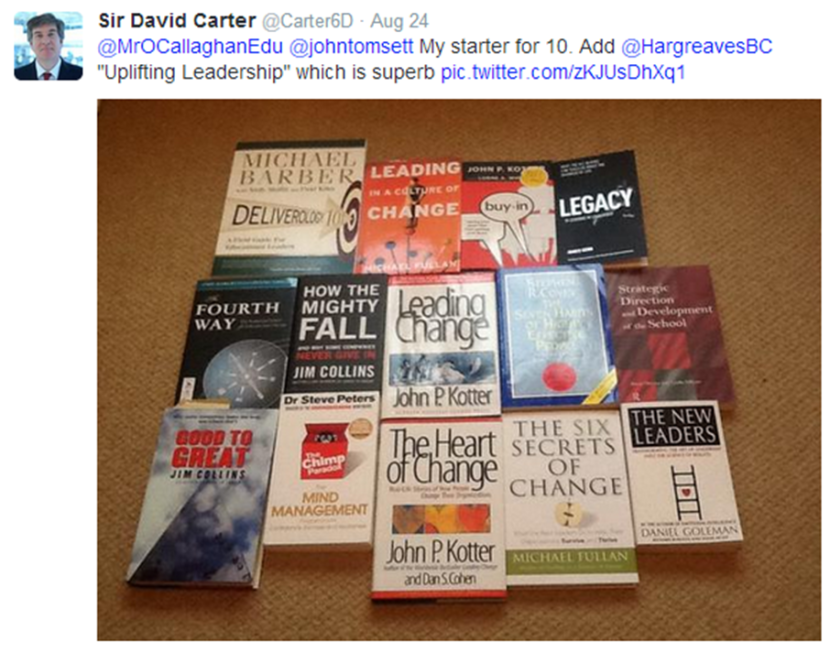



Don’t wait for the right role to emerge. Take action and create your own role. Life is too short not to do something that really matters.
#neverstoplearning
What great schools do.
A few weeks ago I read an article on the BBC website written by Mike Henson entitled – ‘Inside the cult of Saracens.’ The article explores how the English rugby team Saracens has built a culture of togetherness that has enabled the team to perform better on the pitch. If you haven’t read the article please spend five minutes reading now!
After reading the article one section struck me as an excellent vision statement for what successful schools do. If you replaced ‘Saracens’ with the name of your school you have an extremely powerful statement of intent…

What successful schools do – taken from http://www.bbc.co.uk/sport/0/rugby-union/27536258
From reading the above statement you would never be in any doubt of the WHY behind Saracens. They know WHAT they do and HOW to go about doing it. What gives them an edge over their opponents is an extremely clear sense of WHY they do what they do. It’s this clear purpose that binds great teams together. This theory comes from Simon Sinek and is summed up in the TED talk below.
How clear is your sense of WHY you do what you do?
How clearly articulated (and frequently) is your schools WHY communicated?
#neverstoplearning
The Dip.
Ever felt like giving up on something? A project, a run, a blog post, organising an event, revising for an exam? If the answer to this question is ‘No’ I applaud you. You are either an extremely ‘GRIT-y’ person or perhaps you haven’t found a real challenge yet. If you answered ‘Yes’ then you have experienced the ‘Dip.’ In this, the first in a series of posts that explore motivation, GRIT, character strengths & growth mindset, I’m hoping to summarise what I have discovered from reading a series of books on these areas and what potential impact I believe it could have in the classroom. This first post looks at the bigger picture and addresses the general myth that successful people ‘never give up.’ In Seth Godin’s short book ‘The Dip’ he looks at why some businesses, organisations and people are successful and why some are not. Over the timeline of any successful project he argues that more often than not there is a ‘Dip’ where things get hard, more effort is required and the honeymoon period of the initial idea ends. The dip looks something like this:
The Dip is the point in a project whereby people leading make a decision. Is the outcome worth the extra effort and resources? Successful people are able to make the tough decision to either persevere because the outcome is worth the extra effort and resources or quit and invest their time, effort and resources into something that will be truly remarkable instead. Being able to successful make that decision at the point of the dip is tricky, risky and requires some experience, clear bigger picture thinking and the confidence to quit. Godin suggests the ‘Dip’ is the secret to success…
…the Dip is the secret to your success. The people who set out to make it through the Dip – the people who invest the time and the energy and the effort to power through the Dip – those are the ones who become the best in the world. They are breaking the system because, instead of moving on to the next thing, instead of doing slightly above average and settling for what they’ve got, they embrace the challenge. For whatever reason they refuse to abandon the quest and they push through the Dip all the way to the next year.
If something is worth doing then it will probably involve a Dip. But not always. How do we know it’s time to quit something? Have a look at the curves below:
Godin talks about knowing when to quit if the project curve looks like a ‘Cliff’ or ‘cul-de-sac.’ The cul-de-sac is described as…
…a situation where you work and you work and you work and nothing changes. It doesn’t get a lot better. it doesn’t get a lot worse. It just is.
Godin describes the ‘Cliff” as…
…a situation where you can’t quit until you fall off, and the whole thing falls apart.
The main problem is knowing when you are on either of these two paths. It would be quite easy to mistake the Dip for the ‘Cliff” for example. Having a clear goal, starting with the end in mind will help you determine what path you are on. Revisiting the purpose regularly, reflecting and being brutally honest with yourself will also help – sometimes it may be easier to continue a project (even if you suspect a ‘cul-de-sac’) then quit and devote your time and resources to something will make a bigger dent in the universe.
I experienced the Dip recently whilst organising a teach-meet. After the initial buzz of announcing that I was going to host a teach meet for 200 teachers I was hit by the never-ending list of things that needed to happen in order for the event to be a success. Coupled with a full teaching timetable and responsibilities within my department – there was a point (if I’m being honest) where the thought of quitting crossed my mind. My goal was to put on a truly remarkable event and if I didn’t have the time and resources to do that, perhaps I should focus my time and resources into something else. However the end of goal was too important and I instead decided to lean into the Dip and persevere (something I’ve learned from ultra running). Having attended other teach meets I knew how inspirational these events can be and how much they make teachers think, re-focus and offer opportunities for teachers to take ideas that can have a positive impact on students.
Links to teaching.
As a teacher I’ve certainly had many moments where I’ve felt like quitting something because the outcome didn’t seem worth the time and effort. There have been times when I’ve powered through the Dip and had some truly amazing lessons, CPD sessions, e.t.c. There have also been other times where in hindsight I would have been better off quitting earlier and re-focusing my time and effort. But still I learnt from those experiences so all is not lost. From reading Godin’s work I will definitely be thinking of the curves mentioned earlier in this post when planning new department and school wide projects. It has also made me think about planning lessons. In a lesson or scheme of work when will students experience the Dip? What will students be thinking during the Dip? What action should I take? I believe this is where GRIT, character strengths and the growth mindset model fit in. These habits can be used to help navigate through the Dip. In my next post I’ll be exploring these habits and how they can positively influence learning.
The moral purpose of schools is obvious isn’t it?
“We don’t need to spend much time on that, we all know the moral purpose.” The moral purpose of schools is obvious isn’t it?
Last week during an NPQML session we were tasked to articulate our school’s moral purpose and describe the last time we’d heard it. A few heads turned. People began to think. It wasn’t as straightforward as first thought. Something came to light in the discussions that followed. Is the moral purpose of your school to do everything in your power to provide the best possible education and outcomes for the young people in your care? Or is the moral purpose of your school to be an ‘outstanding’ or ‘great’ school? Are these two things one in the same? The latter could end up focusing more heavily on the WHAT and HOW rather than focusing on the WHY.
School’s can be very complex places to manage and lead with so many variables to contend with. The best schools (I think) seek to simplify processes and procedures to ensure time is not needlessly taken away from teaching and learning. But what role does the moral purpose play in making strategic and tactical decisions? It should be part of the DNA of these decisions and well articulated to all staff consistently on a regular basis.
Simon Sinek’s ‘Golden circle’ model sums it up quite nicely for me. The WHY (cause, purpose, belief) should be the driving the force behind WHAT you do as a school and HOW you do it.
What is your school’s purpose, cause or belief? Here’s my attempt at articulating a moral purpose for schools –
We believe that every student has the opportunity to succeed given the right school environment. As a school its our purpose to ensure teachers can teach so that students can learn. We aim to grow amazing young people with great outcomes that unlocking better futures.
How often should we revisit and articulate our moral purpose? The more complex it becomes the less impact it will have, which is why I really like KIPP’s tagline – ‘Work hard. Be nice.’ The moral purpose should be at the heart of everything we do in schools and should not be skipped over because it is ‘obvious.’ Schools are extremely busy places and we need make an effort from time to time to ensure the moral purpose remains at the heart of what we do.
At this extremely busy and intensely pressured time of year for teachers, its worth taking a bit of time out to revisit WHY you do what you do. Every interaction you have with young people in school is an opportunity to positively influence and inspire. That’s why we signed up.
Keep making a difference.
Shifting gears
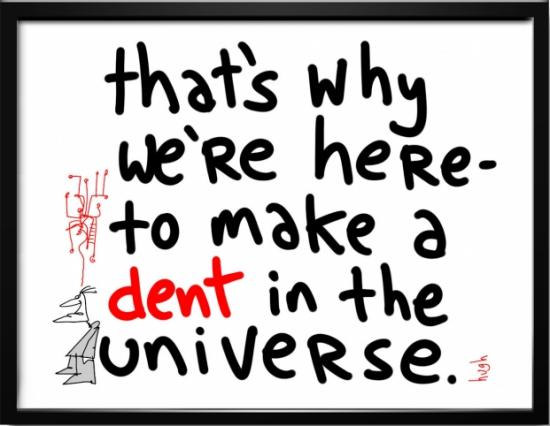
Image via @gapingvoid – http://gapingvoid.com/
Inspired by Zoe Elder’s post – ‘Why we continue to accept the challenge’ and Mark Anderson’s post ‘Be happy,’ here is a quick post with the start of a new term in mind.
2013 was a remarkable year. 2014 will be better. It’s time to shift gears.
Four tips to help you make this year even better:
1. Keep exploring.
2. Connect with others.
3. Share your discoveries.
4. Deepen your understanding.
Remember, you’re only human but you make an incredible difference.

